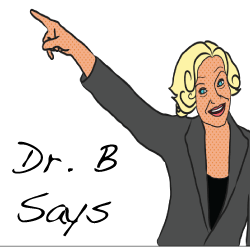 Resources and Materials
Resources and Materials

Many beginning teachers struggle to find resources that are both appropriate and meaningful. This is especially the case for language teachers, who often find themselves without a required textbook or course support materials. In addition, language teachers need to find and select print or multi-media materials in order to expose the learners to as much of the TL as possible in the classroom. If we look at the case studies and Jin's in particular, we see that he is struggling to find resources other than those given to him by his mentor teacher. Where can he look for resources and materials? What should he be looking for? Finding and collecting resources is an ongoing process for a teacher that can last throughout one’s whole career. Knowing where to look and what to collect can seem like a daunting task at first, but resources can prove to be a teacher’s best friend if the teacher explores what constitutes a ‘good’ resource and by creating a resources binder. |
back to...Jin's case studyAnna's case studyMarguerite's case study |
Why is it important to find good resources and materials?
Any beginner teacher knows that access to resources can make a world of difference in both lesson planning and preparation. As a language teacher, finding and accessing varied resources is especially important as it allows teachers to use ideas and learning experiences that are already proven to work. In addition, the use of diverse resources in teaching can help to create context within a lesson, thus facilitating language learning.
There is no question that resources are valuable in the second language classroom. However, finding ‘good’ resources can be a challenge, especially if one is unaware of where to look. Other questions that arise are: what constitutes a ‘good’ resource? How can resources be organized? What types of resources are most effective for student learning? Answers to these questions and more can be found below.
Where can I find resources?
-
The internet is an excellent tool for searching for resources. Everything from videos, flyers, newspapers, blogs and ideas for activities can be found on the internet. Click to find out more about using technology in the classroom.
-
Many school districts offer resources either online or through libraries. These resources are often created or chosen to correspond with the curriculum of the district.
-
Language teachers should also always be on the lookout for everyday materials when traveling abroad. Simple things like a metro map, a museum brochure or a movie poster can make a world of difference in the classroom.
-
Investigate the libraries in your area for books, dvds, videos, cassettes and cds; many librairies have large foreign language sections. Be sure to check out any college or university nearby and visit their language departments or libraries, too.
-
Many communities have Heritage Language Programs staffed by native speakers; they are often very willing to share resources or even to come visit the class to promote the language.
-
Finally, don't feel like you are on your own. Talk to your colleagues! Be prepared to share with them and they will hopefully return the favour.
For tips on buying resources for your program visit the Buying Resources for the SL Classroom page.
back to top
What constitutes a ‘good resource’?
Currency- How current is the resource?
Appropriateness- Does the resource meet the objectives of the lesson? Does it add to the lesson or distract from what is important? Is the resource at an appropriate language level for the students?
Relevance- Does the resource relate to the topic being studied? Does the resource relate to the interests of the students?
Quality- Does the resource have value in the lesson? Is the sound/video/text/etc. of good quality so as not distract from the information?
What types of resources are most effective for student learning?
Now that we have discovered what constitutes a ‘good’ resource and where we can look for these resources, it is important to look at the different categories resources can fall under. One type of resource that can be used in the second language classroom is called an authentic resource.
Although definitions of an authentic resource varies, most definitions suggest that these resources involve “exposure to real language and its use in its own community”
(Kilickaya, F.http://iteslj.org/Techniques/Kilickaya-AutenticMaterial.html)
The main advantages of using authentic materials are (Philips and Shettlesworth 1978; Clarke 1989; Peacock 1997, cited in Richards, 2001):
- They have a positive effect on learner motivation.
- They provide authentic cultural information.
- They provide exposure to real language.
- They relate more closely to learners ' needs.
- They support a more creative approach to teaching.
How do I create a resource binder?
-
Find a binder and create dividers for sections you find useful in your teaching. Examples could include:
- Grammar games-activities
- Guest speakers
- Information Gap activities
- Language Lab activities
- Listening comprehension activities
- Logical-mathematical activities
- Matching and Sequencing Activities
- Look through textbooks, on-line sites, and in libraries for examples of activities that fit into each category. Remember that you are not looking for lots of different themes, just lots of different activities in the category.
- Try to share resources with colleagues and fellow teachers in order to gather as many ‘good proven ideas’ as possible. Don´t reinvent the wheel!!
- Adapt resources to your language.
- Organize your resources. (Resources could also be scanned in order to create a digital copy).
Adding to the resource binder is an ongoing process and can be something that evolves throughout one’s whole career.
back to top

Authentic Materials: An Overview
http://www3.telus.net/linguisticsissues/authenticmaterials.html
Sample Lesson Plans to Use With Authentic Materials
http://www.lmp.ucla.edu/Lessons.aspx?menu=003










